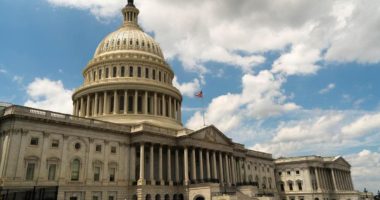The Department of Health and Human Services (HHS), under the direction of HHS Secretary Robert F. Kennedy Jr., initiated a major reorganization. This has a direct impact on many agencies and individuals that oversee federal programs relevant to allergists and our patients.
According to HHS communications, under this plan, the agency’s bureaucracy will be consolidated from 28 divisions into 15. HHS will also reduce its regional offices from 10 to five. This reorganization includes reducing the HHS workforce by 20,000 people.
The key feature of the reorganization is the creation of a new Administration for a Healthy America (AHA) that consolidates the Office of the Assistant Secretary for Health (OASH), Health Resources and Services Administration (HRSA), Substance Abuse and Mental Health Services Administration (SAMHSA), Agency for Toxic Substances and Disease Registry (ATSDR), and National Institute for Occupational Safety and Health (NIOSH) – into a new, unified entity.
These agencies lead HHS’ work on topics that are of a personal interest to Secretary Kennedy, such as environmental health and chronic disease. Consolidating these offices into a single entity could give Secretary Kennedy more control over the agency’s work on these issues.
HHS also plans to create a new Assistant Secretary for Enforcement to oversee the Departmental Appeals Board (DAB), Office of Medicare Hearings and Appeals (OMHA), and Office for Civil Rights (OCR) to combat waste, fraud, and abuse in federal health programs. HHS OCR is responsible for enforcing HIPAA privacy and cybersecurity requirements. The DAB and OMHA play an important role in the Medicare claims appeals process.
We do not yet have a full picture of the workforce reductions, as the layoffs across HHS are a very fluid situation. News reports are beginning to shed light on which agencies and individuals were impacted but are limited in detail. There are strict limitations on what the remaining staff can communicate, making it challenging to confirm or refute stories. The only public information available is from the HHS factsheet on the reorganization, which outlines that most workforce reductions will come from:
Food and Drug Administration (FDA): 3,500 positions
Notably, the FDA’s Chief Medical Officer was included in cuts. While not part of the layoffs, Dr. Peter Marks, who led the FDA’s Center for Biologics Evaluation and Research (CBER) resigned, citing disagreements with Secretary Kennedy. The past two FDA Commissioners, Dr. Robert Califf and Dr. Scott Gottlieb, both criticized the FDA job cuts.
Centers for Disease Control and Prevention (CDC): 2,400 positions
At the CDC, the reduction in force impacted 17 major centers and institutes, including the National Asthma Control Program (NACP), which was created in 1999 to help “improve the reach, quality, effectiveness, and sustainability of asthma control services and to reduce asthma morbidity, mortality, and disparities.” It is not clear if the NACP’s programs will be absorbed into other parts of the CDC or HHS.
National Institutes of Health (NIH): 1,200 positions
At the NIH, five institute directors were laid off, including Dr. Jeanne Marazzo, the director of the National Institute of Allergy and Infectious Diseases (NIAID). Before Marazzo, this position was held by Dr. Anthony Fauci. Other offices within NIAID were impacted, such as parts of the NIAID’s Office of Communications and Government Relations.
Centers for Medicare and Medicaid Services (CMS): 300 positions
CMS has also been impacted despite fewer terminations than other agencies. HHS eliminated both the HHS and CMS Offices of Minority Health. In addition, the CMS Partner Relations Group (PRG), which serves as a liaison between CMS and public stakeholders, was heavily impacted by the terminations. Programs and staff that facilitate Medicare payments to physicians and other key services were not directly impacted. CMS could be subject to additional reorganization in the future now that Dr. Mehmet Oz has been confirmed as CMS Administrator.
A common theme across the layoffs appears to be a focus on offices responsible for agency communications and Freedom of Information Act (FOIA) requests.
The Trump Administration has already terminated thousands of probationary employees, who have not been with the agency long enough to receive civil service protections. This new reduction in force also applies to agency officials who have passed their probationary period.
While sources within agencies are reporting additional impacts, at this time we are unable to verify this information.
Why did Secretary Kennedy institute these changes? A fortuitously timed interview with Calley Means, a top advisor to Secretary Kennedy, pulls back the curtain on the Secretary’s reasoning for these changes. In the interview, Secretary Kennedy asserts that HHS is failing to keep Americans healthy, and that this failure necessitates major changes at the agency. While no additional cuts are planned at this time, the Department will continue to look for ways to streamline its operations and agencies. The full interview is worth reading as it reveals much about how Secretary Kennedy will approach his job.
The Advocacy Council will continue to assess how these changes will impact allergy practices. We will also have an opportunity to discuss these impacts with Congress during our 2025 Advocacy “Strike Force” visits on May 6.
The Advocacy Council – ADVOCATING FOR ALLERGISTS AND THEIR PATIENTS.



